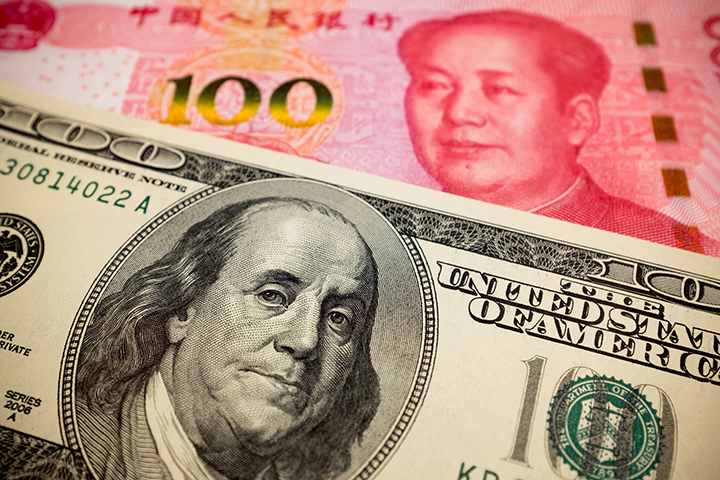How Could China’s New Foreign Investment Law Impact Trade Debate?
Negotiators from the United States and China have met repeatedly in recent weeks to reach an agreement to resolve some of the trade irritants between them, including the high-profile issue of forced technology transfers.
Negotiators from the United States and China have met repeatedly in recent weeks to reach an agreement to resolve some of the trade irritants between them, including the high-profile issue of forced technology transfers.
Reports now indicate that the two economic giants could announce a deal in May.
As these talks press toward a conclusion, questions remain over how a new Chinese foreign investment law with explicit provisions barring mandatory technology transfers may affect the bilateral economic relationship, as well as how they may factor into a broader debate on potentially developing new international trade rules in this area.

The new investment legislation in question was approved by Chinese lawmakers this past March and will govern how foreign investment is conducted in mainland China. The law would take effect from 2020 onward and includes among its 42 articles a prohibition on the forced transfer of technologies through administrative measures.
Technology transfer has traditionally been used by many countries, including China, as a performance requirement imposed on foreign investors to foster the competitiveness of local enterprises. However, there have been growing efforts in recent years by some developed economies to prohibit this practice, as witnessed in some of the recently concluded international investment treaties and trade agreements with investment chapters.
In the past, Chinese governments at both central and local levels allowed, and in some instances encouraged, foreign investors to make in-kind capital contributions in the form of technology licensing or transfer. Beijing has long held that this does not constitute a formal requirement for foreign businesses to transfer technology in exchange for being able to operate in China, though the United States, the European Union (EU) and private sector actors have argued that these practices have that effect.
Looking back: The Section 301 probe and trade disputes on tech transfers
The process to finalize the new Chinese legislation advanced quickly in the early months of 2019, which observers credit partly to the current tenor of the trade conversation between China and various key partners, particularly the United States.
The subject of forced technology transfers has been one of the primary issues fuelling the high-profile U.S.–China trade row over the past two years, given that Washington considers these types of requirements to be a way of creating market barriers for U.S. companies looking to do business abroad.
As a result, the United States launched a Section 301 investigation in August 2017 into “whether China’s acts, policies, and practices related to technology transfer, intellectual property, and innovation are unreasonable, unjustifiable, or discriminatory and burden or restrict U.S. commerce.” Section 301 refers to a provision in the U.S. Trade Act of 1974 that sets out the terms under which the U.S. Executive Branch can conduct investigations into allegedly unfair trade practices and what actions it can take in response.
Following the investigation, the Trump Administration endorsed a series of proposed Section 301 actions in March 2018, including the first round of tariffs on products from certain Chinese sectors, initially focusing on aerospace, information and communication technology, and machinery. It also foresaw the possibility of ratcheting up these tariffs if the issues raised were not adequately addressed.
Concurrently, the Office of the U.S. Trade Representative filed a request for consultations at the World Trade Organization (WTO) on one specific aspect of the Section 301 investigation’s findings, specifically on allegedly discriminatory technology licensing practices that Washington says violates certain articles of the WTO’s intellectual property rules. In January 2019, that dispute advanced to the panel stage.
The EU submitted its own WTO consultations request on China’s laws and regulations on the transfer of foreign technologies in June 2018; it has since revised its consultations request in a series of areas. That process is still at the consultations phase.
Prior to filing the consultations request, the EU repeatedly raised its own concerns over the issue of forced technology transfers, including in a 2018 Commission Staff Working Document on intellectual property rights protections and enforcement. At the time, the EU said “stakeholders report that many Chinese procurement proceedings require technology transfers or know-how disclosure from foreign companies,” though those concerns were not limited to China.
The provision on banning forced technology transfers in the new investment law may be a concession from China to address such concerns, though it is not yet clear how the new law will eliminate or affect existing practices. The Chinese government is slated to release rules on the new law’s implementation later this year, which may provide some clarity on the subject.

As U.S.–China tensions have escalated over the technology transfer issue and other trade irritants, such as industrial overcapacity, the two countries have each spent the past year imposing hefty tariffs on the vast bulk of goods traded between them. The situation has fuelled concerns within their countries and among their trading partners that the continued use of these trade restrictions will significantly hamper global trade and economic growth, along with increasing costs for U.S. and Chinese consumers and harm to domestic producers in both countries.
Policy-makers assess options: Trilateral update, EU–China leaders’ statement
As fears over the health of the global economy persist, the new Chinese foreign investment law could also have implications for high-level debates on systemic reforms to international trade rules. Those discussions have continued in various country configurations over the past 18 months.
For example, the subject of whether and how to negotiate new rules to address forced technology transfers is part of the agenda of the U.S.–EU–Japan “trilateral” process, amid a wider discussion on industrial subsidies, state-owned enterprises, and WTO notifications and the functioning of the organization’s regular bodies.
Those trade ministers are conducting their work on forced technology transfers on the basis of a joint statement adopted in May 2018, where they examined “the need to establish and share best practices, coordinating where useful, on mechanisms to stop” such practices by governments. They also announced plans to collaborate with “like-minded partners” on the subject, with the goal of finding “effective means to stop harmful forced technology transfer policies and practices, including, where appropriate, dispute settlement proceedings at the WTO.”
Subsequent statements have referred to rulemaking in this area, as well as enforcement. The next minister-level trilateral meeting is planned for this spring, according to the Office of the U.S. Trade Representative.
Separately, leaders from the EU and China discussed the subject of forced technology transfers at their summit in Brussels, Belgium, in early April. Notably, their joint statement included shared language stating: “both sides agree that there should not be forced transfer of technology.” They also referred to the wider discussions being held by vice ministers within an EU–China Joint Working Group on WTO reform, established in July 2018. What impacts these discussions among the major players may have on the situation of developing countries desperately in need of technology transfer remains unclear at this time.
You might also be interested in
Why Is Investment Treaty and Investor-State Dispute Settlement Reform Needed?
Why investment treaty and ISDS reform is critical for unlocking sustainable development.
FfD4 Countdown: Strengthening trade policy for sustainable development
The Fourth International Conference on Financing for Development (FfD4) in July 2025 is an opportunity to redefine the role of trade policy frameworks in supporting sustainable and inclusive development.
The State of BCAs 2025
As more countries boost their climate ambition, border carbon adjustments (BCAs) are emerging to curb carbon leakage, with the European Union, the United Kingdom, and others advancing their own mechanisms. This publication is the first of its kind taking stock of this trend.
State of the Sector: Critical energy transition minerals for India
This report presents a comprehensive strategy for securing a reliable supply of critical energy transition materials (CETMs) essential to India's clean energy and low-carbon technology initiatives.
